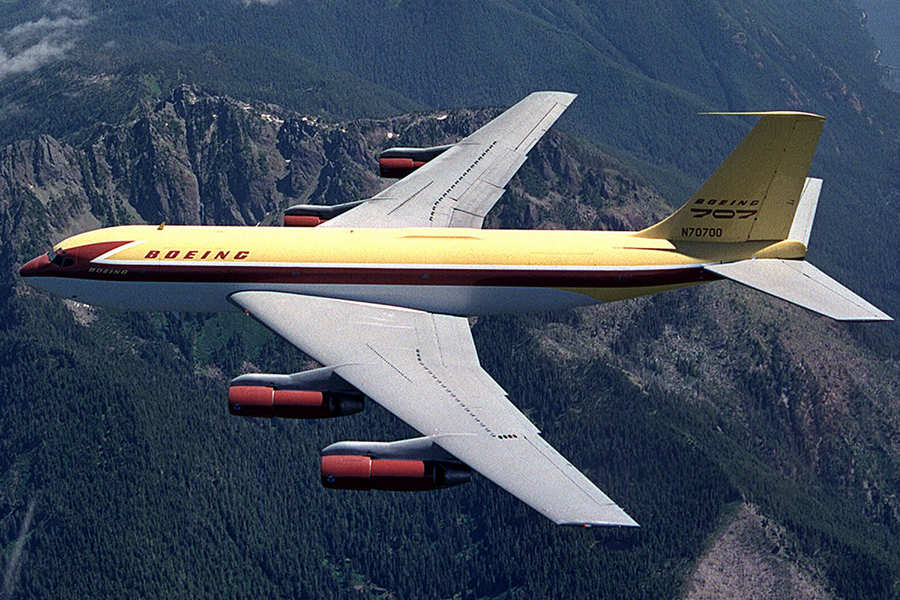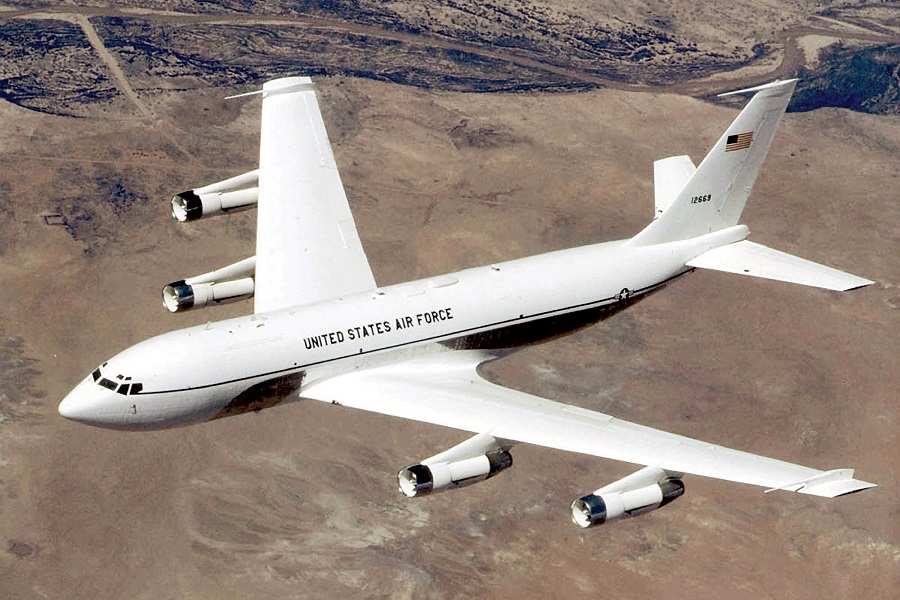We all know about the 707 and the 727, but what about the Boeing 717 designation? Did Boeing just skip it? The answer is No… but also, Yes!
Now before we get going, a quick clarification. It should be obvious but this article is NOT about the aircraft that started life as the McDonnell Douglas MD-95. It later became the 717, when the two manufacturers merged. But here we are having a quick look back at the mid-to-late 1950s, and the way Boeing names its jets.

Starting with the 707 in 1957, Boeing names its jet aircraft using the 7×7 format. The middle digit is a numeral, from 0 to 9. And obviously, 9 is the only one they’ve yet to use, like the 797. Boeing did try to use the 717 designation at least twice in the late 50s and early 60s. Alas, it just didn’t stick! The manufacturer didn’t so much skip the 717 designation, as it abandoned it.
The confusing story of the 717 begins with the Boeing 367-80, or simply ‘Dash 80’. This plane clearly looks like Boeing 707, perhaps with a shorter fuselage. It also had the registration N70700, and for years (though not initially) sported a “Boeing 707” moniker on its tail. This plane really deserves its own article, but here’s a short look into its history.

Dragging The Airlines To The Jet Age
Basically, Boeing in the 50s had a marketing problem. The company had a lot of experience making jets for the US military. And its people knew that they could make a really good jet-powered airliner. But it was hard to convince the airlines about this. Jet engines were still in their infancy, were noisy and burned a lot of fuel! The airlines were happy with their existing aircraft. So, Boeing decided to make a demonstrator, to change their mind. This was the ‘Dash 80’.
The airlines quite liked this aircraft but wanted some changes. By now, Douglas was marketing what would become the DC-8, with six abreast sitting. Boeing had planned to make the 707 with five people per row – well narrower than the DC-8. Boeing agreed to widen the fuselage (an inch wider than the DC-8), to please the airlines.

So at this point, the manufacturer knew that its six-abreast jet would be the 707. But this would need more development. So Boeing decided to make a 717 as well! This would be a narrower version, closer to the Dash 80, that would suit the military for freight and air-refuelling. This plane would become the C-135 and KC-135. But Boeing also offered it to the airlines as a freighter, named the 717.
Boeing 717 – No Civilian Career
Not surprisingly, the airlines didn’t particularly care for the Boeing 717. But don’t feel too sorry for the manufacturer. The military version sold 60 aircraft, designated the C-135, and a whopping 803 aircraft, as the KC-135! There were more military versions, but most of them involved modifications of existing aircraft. All-in-all, it was a successful aircraft, with many still flying today.

But Boeing had another go at designating an aircraft as the 717. This involved a shorter variant of the 707, for short and medium-haul use. Yes, today a jet with four engines would seem unusual as a choice for such flights – the Avro RJ100 non-withstanding. In the end, that aircraft got the designation “720”, being the only Boeing commercial jet to eschew the 7×7 convention.
Boeing didn’t consider the 717 designation for the plane we know as the 727, showcasing the latter as a new design. Then they used “717” after the McDonnell Douglas merger/takeover for the MD-95, as a default. But with only the “797” designation now remaining, many wonder what could come next?

Boeing itself gave us a clue about this, a long time ago. The ill-fated Boeing Supersonic Transport (SST) would have had the designation “2707”. In essence, Boeing hoped to “reset” the 7×7 naming convention, for a future supersonic family of jets. So the plan was to use a “27×7” convention for these. Alas, that plan ended before it could start – but that’s another story!




2 comments
Andrew Steitz
That is the strangest looking “engine” I have ever seen on the picture of the Qantas 707. It has no air intake. My guess is that it is a fuel pod since Qantas has always had ultra long haul flights given the location of their home country. Also, having just one on one side of the aircraft would be very unbalanced so my guess is that there is another one on the other wing
Spyros Georgilidakis
I should have explained this one a bit better — but it was a last-minute thing, not really relevant to the article. That IS an engine, and there isn’t one on the other side. It is a spare engine, with a fairing covering the engine intake, but you can see that it has the same bulge along its side (generator?) as the two working engines. This is a method that Qantas and a few other airlines used, to get engines quickly to far-flung places. This was back when it wasn’t possible to hire an Antonov, to carry a spare engine to a stranded plane, somewhere. This practice continued with the 747, but again — not everyone did it. It’s actually interesting that this engine here has a fairing — as far as I know, they didn’t put fairings on spare 747 engines. Most likely because the fairing for those engines would have been too big to put in the hold, on the return journey!